NEW YORK – Tablets are at the top of many wish lists this holiday season. But what to get? The choice used to be pretty limited, with the iPad dominating. But this year, the field is more even, as tablets from Apple’s competitors have matured.
In addition, Google and Microsoft are diving in with their own tablets, providing more choice.
The first step in the buying process is to decide on the size of the tablet. They fall into two rough categories: the full-sized tablet, pioneered by the iPad, and the half-size tablet, epitomized by the Kindle Fire.
Full-sized tablets, which generally have screens measuring about 10 inches on the diagonal, are better for surfing websites designed for PCs, and far better when it comes to displaying magazines and documents. Overall, they go further toward replacing a laptop. New ones cost $400 and up.
Half-sized tablets, which have screens measuring roughly 7 inches on the diagonal, are cheaper and lighter, but just as good as full-sized tablets for e-book reading. It’s an excellent first computing device for a kid, or a gentle nudge into the digital world for an older adult with little computing experience. This year’s crop costs $199 and up, but last year’s models are available for less.
LARGE TABLETS
If you’ve settled on a large tablet, here are some top choices:
• Apple iPad, fourth generation (starts at $499)
Apple usually updates the iPad once a year, so it was a surprise when it dropped a new model in October, with a faster processor and the new Lightning connection and charging port, replacing the wide port inherited from the iPod.
Like the third-generation iPad launched in March, it has an ultra-high-resolution Retina screen. The model’s resolution of 2,048 by 1,536 pixels is surpassed only by the Google Nexus 10.
That means the current iPad is two generations ahead of the iPad 2 that was on sale last holiday season. It packs enough improvements to make the upgrade worth it. The iPad 2 is still on sale for $100 less, but it’s not a very good value for the money: if $400 is all you can spend, there are better tablets out there than the iPad 2.
While other tablets are starting to approach it in terms of hardware, the iPad still enjoys the best support by far from third parties, both in terms of quality applications and accessories like cases.
One caveat: the base model of the iPad has only 16 gigabytes of storage, which fills up fast these days. The thoughtful giver goes for at least a 32-gigabyte model, for $100 more.
Other than that, there are few downsides to the iPad: no one will frown when opening this package.
• Barnes & Noble Nook HD+ (starts at $269)
For a book store, Barnes & Noble makes some amazing tablets. The HD+ is its first model that approaches the iPad in size, with a screen that’s 9 inches on the diagonal. That makes it slightly smaller than the iPad, and the resolution is lower as well, but still very respectable. At 1,920 by 1,280 pixels, it can show more detail than a living-room HDTV.
The Nook is family-friendly too. You can create user accounts and restrict them from certain content, so there’s less risk that your kids will stumble on your copy of “Fifty Shades of Grey.”
Like the basic iPad, the basic Nook HD+ comes with just 16 gigabytes of storage memory, but it can be expanded with a microSD memory card. That means another 32 gigabytes will cost you just $25 — a good deal.
But the Nook is the least versatile tablet in our roundup. The number of apps available is small, and it’s focused on Barnes & Noble content like e-books, magazines and movies.
It doesn’t have any cameras, while the competitors have two each. It’s best for someone who’s likely to stick to media consumption, and doesn’t need the latest apps and games.
• Samsung Galaxy Note 10.1 (starts at $499)
If the Nook is for the avid reader or movie watcher, the Galaxy Note 10.1 is for the creative type. It’s the only tablet in our roundup that comes with a “pen” that can be used to write and draw on the screen. In our test, this worked well, though the number of apps that take advantage of the pen is still small. (Other tablets, like the iPad, only respond to finger-like objects, so third-party styluses for them are of necessity thick and clumsy.)
The Note 10.1 runs Google’s Android software, giving it access to a wide array of apps originally written for smartphones. The selection is not on par with the iPad’s but better than other alternatives.
The Note’s screen falls into the low-resolution category, sporting 1,280 by 800 pixels. That’s a third of what the iPad musters.
Like the Nook, the Note 10.1’s storage memory can be expanded with cards.
The Note’s appeal is somewhat niche, but it could be just the thing for the budding or established artist.
• Microsoft Surface (starts at $499)
Microsoft’s first tablet seems at first like a throwback to the first iPad. It’s thick, heavy and rugged. But it’s really doesn’t have much in common with the first iPad or any Apple- or Google-powered tablet. It runs Windows RT, a version of Windows 8 adapted for tablets.
It comes with a version of Microsoft’s Office suite and the ability to connect to wireless printers and some other peripherals, like USB drives. The covers for it have functional keyboard printed on the inside.
The screen resolution is 1,366 by 768 pixels, placing it in the low-resolution category.
The Surface screams “work, work, work.” It’s the tablet for those who are wedded to Word and want to take their writing on the go.
One thing to note about the Surface: the basic model starts out with “32 gigabytes” of memory, but of that, only 16 gigabytes are available to the user. It accepts memory cards of up to 64 gigabytes, however, so expanding the memory is cheap.
Note that even though it runs Windows, the Surface doesn’t run standard Windows applications. It will run only programs specifically adapted for Windows RT. The selection is, for now, quite limited.
• Google Nexus 10 (starts at $399)
This is Google’s first full-size tablet and the only tablet from any manufacturer that beats the screen resolution of the iPad. It boasts 2,560 by 1,600 pixels, a third more than the fourth-generation iPad.
It’s also the only tablet in this roundup that has speakers on either side of the screen when it’s held horizontally, making for good stereo reproduction when you’re watching movies. It has a grippy, rubberized back and widely rounded corners.
There’s no memory card slot or an option for a cellular modem.
The array of third-party software is wide, just as it is for the Note 10.1. Most people don’t associate Google with online books, music or movies, so it may feel odd that the Nexus steers buyers to Google’s Play store. Of course, given the open nature of Google’s Android operating system, there are apps available for other entertainment stores, including Amazon’s, and for streaming services like Netflix.
The Nexus 10 is a snappy performer, and among the iPad’s competitors, it comes the closest to matching the versatility of Apple products.
• Asus Vivo Tab RT (starts at $599 with a dock)
Asus has a quality line of Android tablets they call Transformer because they dock into a keyboard with an extra battery. The combination folds up just like a small laptop and has excellent battery life. The Vivo Tab RT essentially takes a Transformer and stuffs it with Windows RT instead of Android.
The tablet part is smaller and thinner than the Surface. Together with the keyboard, it makes for a familiar little setup: a tiny laptop running Windows. Like the Surface, it has a memory card slot and a USB port. The screen resolution is the same.
The Vivo Tab is a good tool for those who want to get work done on the commute or plane, or those who can’t decide if they want a laptop or a tablet.
SMALL TABLETS
If you’ve settled on a small tablet, here are some top choices.
• Apple iPad Mini (starts at $329 for 16 gigabytes of storage)
The most expensive of the small tablets is also the prettiest. Its exquisitely machined metal rim sets it well apart from competing tablets clothed in plastic and rubber. It’s also thin and light, despite having a screen that’s 40 percent bigger than other “small” tablets.
But the quality of the Mini’s screen doesn’t quite measure up to the competition. It has fewer pixels than other small tablets, and they’re spread over a larger area, making for a relatively coarse, pixelated look. On the other hand, the Mini has two cameras, front and back, which is a rarity.
Where the Mini really wins is in third-party apps: it’s the only small tablet that has access to Apple’s App Store, with a superlative selection of high-quality apps. It’s an excellent addition to the household that’s already hooked on iPhones and full-size iPads. For those not wedded to the “Apple system,” the other tablets merit a close look.
• Amazon Kindle Fire HD (starts at $199 for 16 gigabytes of storage)
A year ago, the Kindle Fire was the plucky, cut-rate tablet, the Dodge Neon to the iPad’s BMW. This year, the gap in quality and features has narrowed considerably. The Kindle Fire HD has a better screen than the iPad Mini, and now sports a front-facing camera. The original Kindle Fire had none.
In another nice touch, it has speakers on either side of the screen when it’s held horizontally, making for much better stereo sound when you’re playing a movie.
The selection of content is narrower than for the iPad, since it’s heavily slanted toward Amazon’s services. Likewise, the selection of third-party apps is smaller than on the iPad or Google’s Nexus 7.
But there are enough games to thrill a kid for hours, and like Barnes & Noble’s Nook, the Kindle can be configured with a special “kid mode” that shields them from racier content — and from messing up your settings.
The Kindle Fire is especially useful for members of Amazon’s Prime shipping service, since they get access to free streaming movies. On the other hand, anyone could be annoyed by the ads that appear on the lock screen. Getting rid of them costs $15. There’s no option for cellular broadband, so you’re limited to Wi-Fi connections.
• Barnes & Noble Nook HD (starts at $199 for 8 gigabytes of storage)
Barnes & Noble has paid a lot of attention to the screens on its Nooks. This year, it’s clearly outdone the competition, with a screen that packs the pixels tighter than any other small tablet. It’s very sharp and colorful, approaching the look of the Retina screen that graces the full-size iPad.
The other strength of the Nook HD is that it has a slot for a memory card, meaning that you can expand the storage space for movies and music by 32 gigabytes for $25. It’s the only tablet in our roundup with this feature.
The downside is that the Nook HD is less of a general-purpose tablet and more of a consumption device for books and movies.
It doesn’t have a camera, so it’s no good for videoconferencing. The selection of apps is the smallest.
You’ll find big names like “Angry Birds” here, but there is no depth to the catalog.
There’s also no option for cellular broadband.
Still, the Nook is an excellent choice for avid readers, kids and others who won’t be frustrated by the small selection of things like 3-D shoot-em-up games.
• Google Nexus 7 (starts at $199 for 16 gigabytes of storage)
Frustrated that Amazon and Barnes & Noble were taking Google’s Android software, gutting it and using it to power tablets that don’t yield the search giant a red cent in advertising revenue or e-book sales, Google this year launched the first tablet under its own brand.
The Nexus 7 has a power-house processor and a screen similar to that of the Kindle Fire HD. Since it runs stock Android, it has access to hundreds of thousands of applications written for Android smartphones, and it has more sophisticated multi-tasking abilities than the competitors, so it’s easy to switch from program to program. Like the iPad Mini, it has a GPS chip for navigation. It has a front-facing camera for videoconferencing.
There’s a $299, 32-gigabyte version that can connect to AT&T’s wireless network.
The Nexus 7 is a great tablet for the technophile who would chafe at the restrictions imposed by competing manufacturers. But anyone will be able to appreciate it.
In terms of kid-friendliness, it’s beaten by Amazon and Barnes & Noble.
Send questions/comments to the editors.

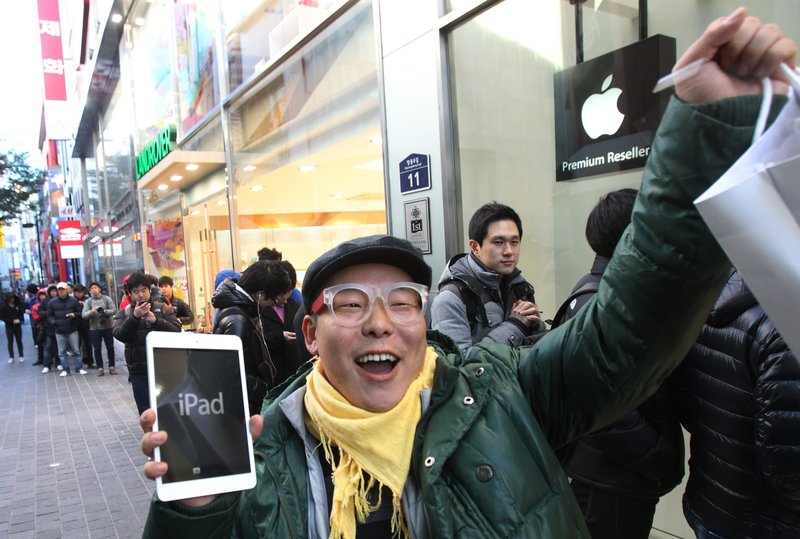
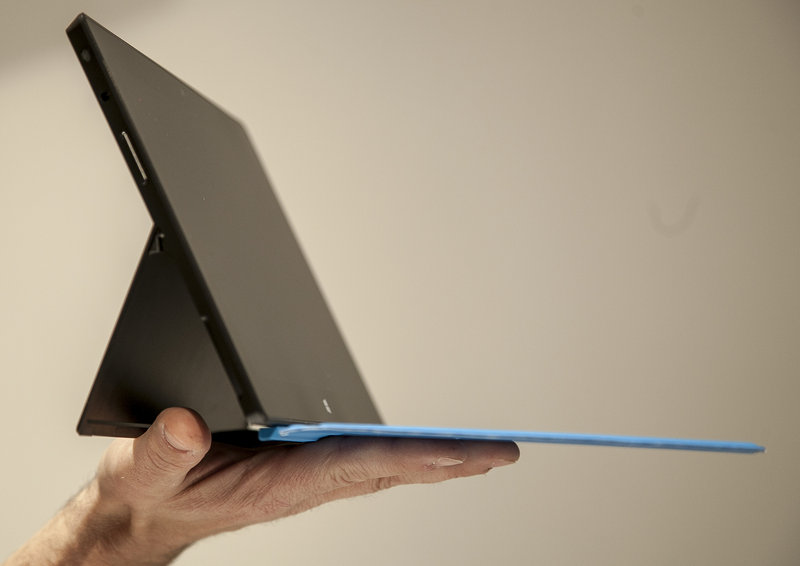
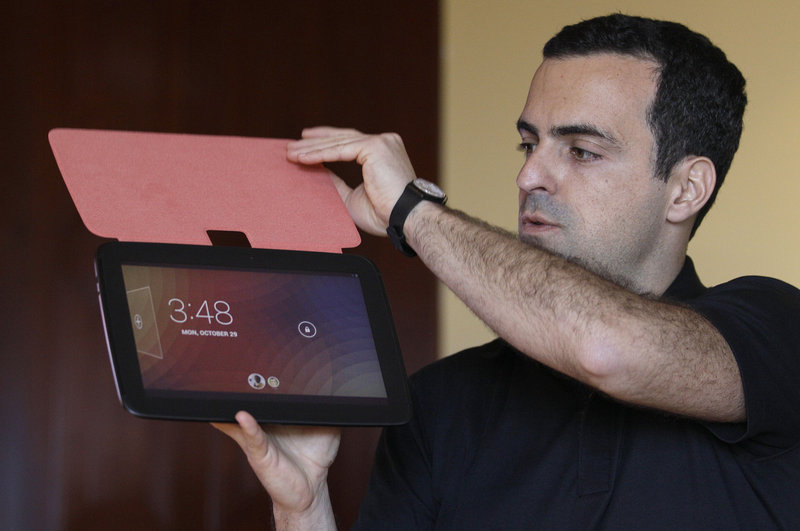
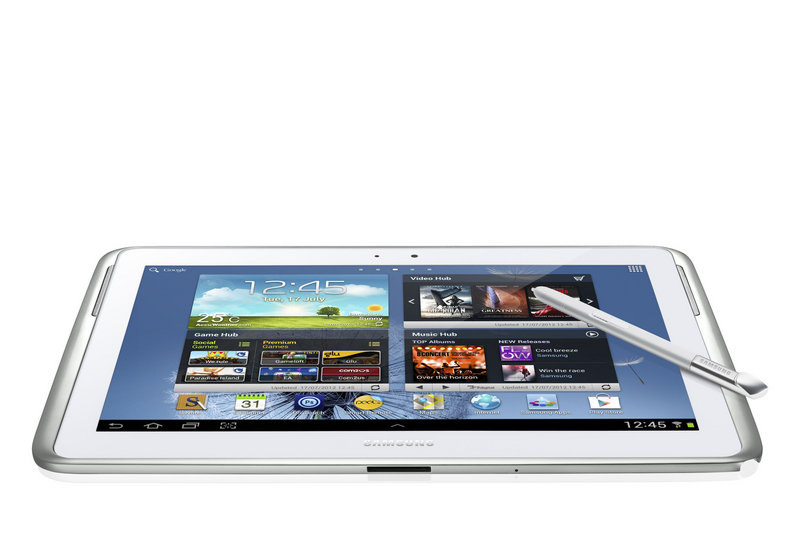
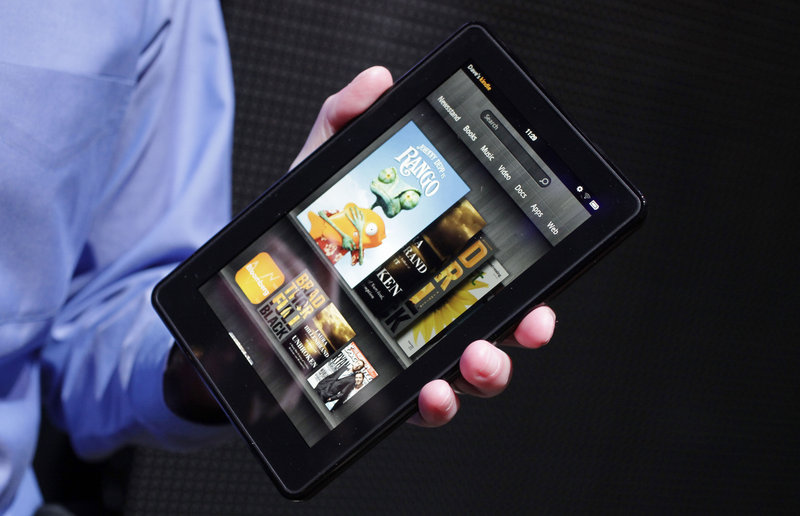
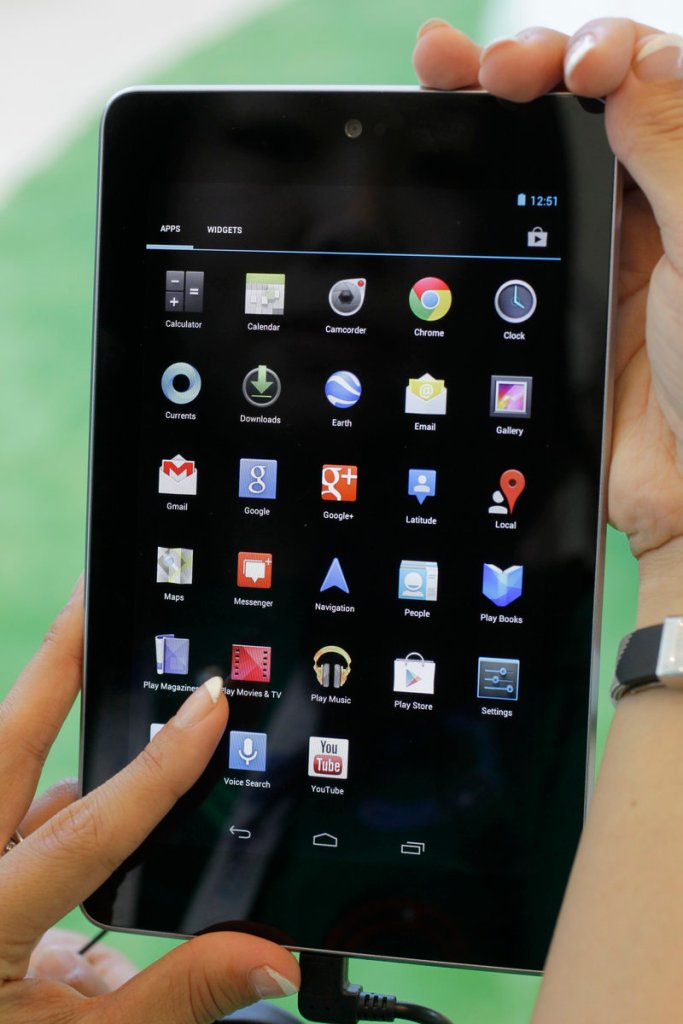
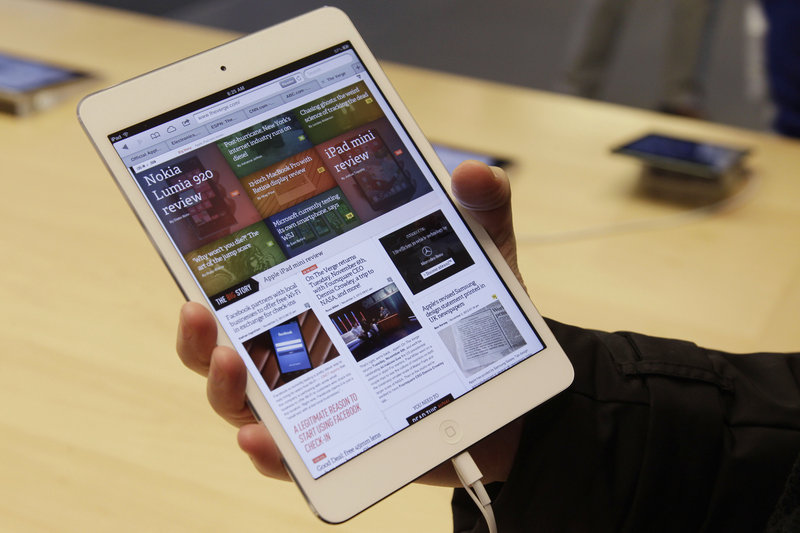

Success. Please wait for the page to reload. If the page does not reload within 5 seconds, please refresh the page.
Enter your email and password to access comments.
Hi, to comment on stories you must . This profile is in addition to your subscription and website login.
Already have a commenting profile? .
Invalid username/password.
Please check your email to confirm and complete your registration.
Only subscribers are eligible to post comments. Please subscribe or login first for digital access. Here’s why.
Use the form below to reset your password. When you've submitted your account email, we will send an email with a reset code.